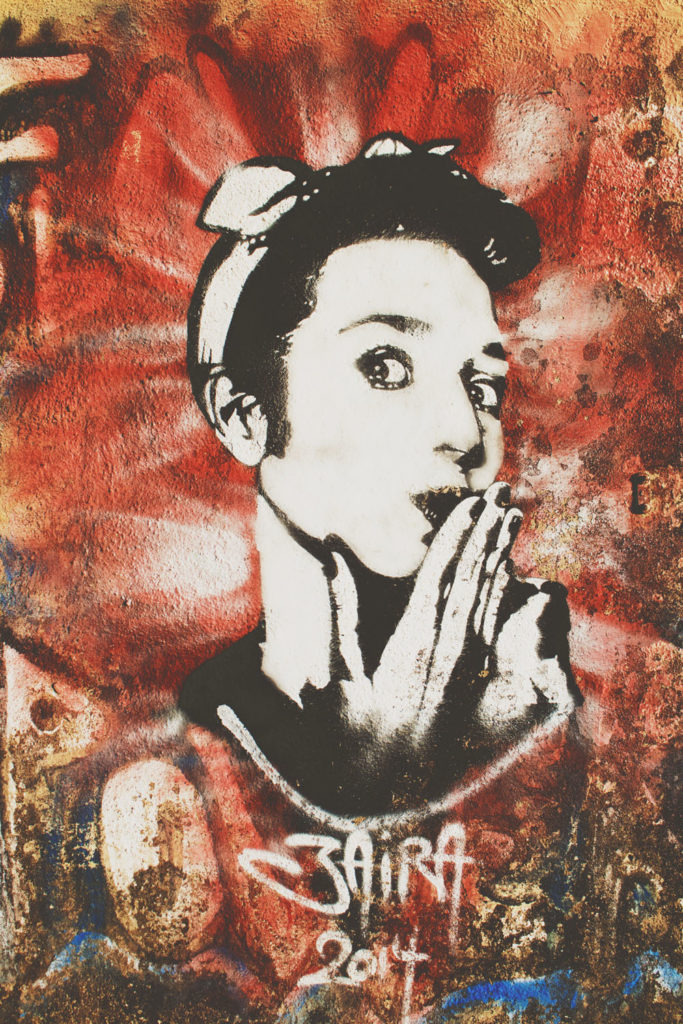
On leaving the hotel in the morning I would hail a taxi for the short ride across town to the Reuters office on Nariman Point. I wasn’t particularly lazy but the taxis – Indian built and perfectly sized for the crowded and anarchic roads of the city – gave me an almost armchair view of the city. This sense was emphasised by the fact that the taxis appeared to be carpeted from floor to ceiling.
Nariman Point is a stubby peninsula that by 2006 was estimated to be the 7th most expensive location in the world for office space. It was an architectural paradox. On one side of the road leading onto the peninsula stood the office blocks aspiring to be high rises. The opposite side was occupied by a decidedly low rise shanty town.
Bombay presented such contrasts wherever I walked. Street food stalls across the pavement from fancy new hotel restaurants. Cattle strolling unconcerned – and unmolested – across busy traffic intersections. Businessmen in suits pursued along the uneven paving by legless beggars on wheeled boards.
But there was a hidden contrast at work in the city at the same time. The glamorous face that Bollywood showed to its devoted fans across the world had a problem with its make-up.
The problem was nothing technical. It was a simple matter of sexism. The Cine Costume, Make-up Artists and Hair Dressers Association (the CCMAA) refused to grant membership to women make-up artists. And as the CCMAA were a closed shop in the Bollywood studio system, it was their rules or no film for the most part.
When women worked on set, they had to be prepared to hide when union officials toured the studio. And, of course, they never received credit for the work they did. The result was that few women saw make-up as a potential career. That was until a campaign started by Charu Khurana, a make-up artist trained in LA who experienced the fines and prejudice of the CCMAA first hand and took legal proceedings against them.
Finally, in late 2014, the Supreme Court of India ruled the CCMAA’s restrictions illegal and demanded that they allow women to become members and work as make-up artists on film sets.
Another make-up artist with an international reputation who has previously stood up to union bullying and refused to pay the fines imposed is IIFA award-winner Namrata Soni. Namrata, who studied at Delamar Academy in Ealing Studios and worked on the record-breaking Om Shanti Om, at first worried that the CCMAA would renege on their promises as soon as the glare of publicity over the Supreme Court decision faded away.
Luckily, this has not happened so far and the number of women working as make-up artists in Bollywood continues to grow. At the same time, the standard of work is steadily increasing. Namrata believes this is down to the way the women themselves approach the work. “Women are perfectionists,” she says. “This pushes the standard higher and it is now finally inching towards that seen in the rest of the world.”
Women who see the potential for a rewarding career are now looking to travel to find the best available training. “Women are willing to pay to get trained because they see the benefits of that training,” says Namrata. “It gives them the confidence and knowledge to go out there and face the challenges that the industry throws their way.”
Those who ask Namrata’s advice about where to train are recommended to try to follow her own path to London. “I’ve met a lot of naturally gifted professionals but training is an important aspect of growth. I feel it’s important to go where you have the opportunity to be trained by the best in the business. I believe Delamar is the best school because it has the best teachers and you leave there prepared for world class achievement.” In fact, Leda Shawyer, Delamar’s Managing Director, reports a large upturn in applications from India since the start of 2015.
Things change. The shanty town that kept in check the hubris of the office dwellers on Nariman Point remains but the rental value of those same offices has plummeted. Business has moved to newer and more central locations within Mumbai. In Bollywood itself, meanwhile, women remain, for the most part, second class citizens but at least when it comes to using their talents as make-up artists, they can now start to compete with their male counterparts on what is rapidly becoming an equal footing.
Disclaimer: I work as an occasional freelance consultant with Delamar Academy and came across this story while talking to Delamar’s Managing Director, Leda Shawyer.